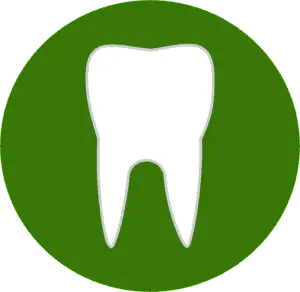
Dental Emergencies
When dental problems arise unexpectedly and require immediate attention, it is essential to recognize them as dental emergencies. Understanding what constitutes a dental emergency can help you act swiftly and seek prompt professional care. Dental emergencies encompass a range of urgent situations involving your teeth, gums, or oral structures that require immediate treatment to alleviate pain, prevent further damage, and preserve oral health.
What is a Dental Emergency?
A dental emergency refers to a sudden and unforeseen dental issue that requires urgent attention from a dental professional. These emergencies often involve severe pain, bleeding, trauma, or the risk of permanent tooth loss. Identifying a dental emergency allows individuals to take appropriate action, seek timely care, and minimize potential complications.
Types of dental emergency and how to deal with them
Avulsed Tooth (tooth knocked out)
An avulsed tooth or knocked-out tooth is another case of a dental emergency. In this case, call our office to seek an appointment with our expert dentists who can try to save your tooth. The avulsed tooth can lead to some potential problems such as tooth damage, tooth loss, blood loss, pain, infection, etc.
Here are some steps to take:
- Call our office.
- Pick up the tooth by the crown and rinse it under warm water. DO NOT touch the root.
- If possible, place it back into its socket – if not tuck it into the cheek pouch.
- If the tooth cannot be placed back into its socket or tucked into the cheek pouch, put the tooth into a cup of milk, saliva, or water as a last resort. It is important to keep the tooth from drying out.
- Get to our office, quickly and safely.
We will try to replace the tooth in its natural socket. In some cases, the tooth will reattach, but if the inner mechanisms of the teeth are seriously damaged, root canal therapy might be necessary.
Lost Filling or Crown
Usually, a crown or filling comes loose while eating. Once it is out of the mouth, the affected tooth may be incredibly sensitive to temperature changes and pressure. Crowns generally become loose because the tooth beneath is decaying. The decay causes shape changes in the teeth – meaning that the crown no longer fits.
If a crown has dropped out of the mouth, make a dental appointment as soon as possible. Keep the crown in a cool, safe place because there is a possibility that we can reinsert it. If the crown is out of the mouth for a long period of time, the teeth may shift or sustain further damage.
When we are not immediately accessible, here are the steps to take:
- Apply clove oil to the tooth to alleviate pain.
- Clean the crown, and affix it onto the tooth with dental cement. This can be purchased at a local pharmacy.
- If the crown is lost, smear the top of the tooth with dental cement to alleviate discomfort.
- DO NOT use any kind of glue to affix the crown.
We will check the crown to see if it still fits. If it does, it will be reattached to the tooth. Where decay is noted, this will be treated and a new crown will be made.
Cracked or broken teeth
Despite being strong, teeth are also prone to fractures, cracks, and breaks. Sometimes fractures are fairly painless, but if the crack extends down into the root, you may feel severe pain. If your teeth are broken or cracked, you must see your nearby dentist immediately.
Where a segment of tooth has been broken off, here are some steps that can be taken at home:
- Call our office.
- Rinse the tooth fragment and the mouth with lukewarm water.
- Apply gauze to the area for ten minutes if there is bleeding.
- Place a cold, damp dishtowel on the cheek to minimize swelling and pain.
- Cover the affected area with over-the-counter dental cement if you cannot see us immediately.
- Take a topical pain reliever.
The nature of the break or fracture will limit what we are able to do. If a fracture or crack extends into the root, root canal therapy is often the most effective way to retain the tooth. In the case of a complete break, your dentist will usually affix the fragment back onto the tooth as a temporary measure.
Dislodged/Loose Teeth
Another case of dental emergency can be when you have dislodged or loosened teeth. Whether your tooth has been loosened from its socket due to trauma or decay, there could be a possibility to save it. If the tooth is still attached to the blood vessels & nerves, there is a high chance to save it.
In this case of an emergency, you can call our office immediately to make an appointment with our expert dentist at Green Dental Sherman Oaks. To relieve the pain in the meantime, use a cold compress and over-the-counter medications. Your dentist will reposition the tooth and add splints to stabilize it. If the tooth fails to heal, root canal therapy might be required.
If you have questions or concerns about dental emergencies, please contact our office.
